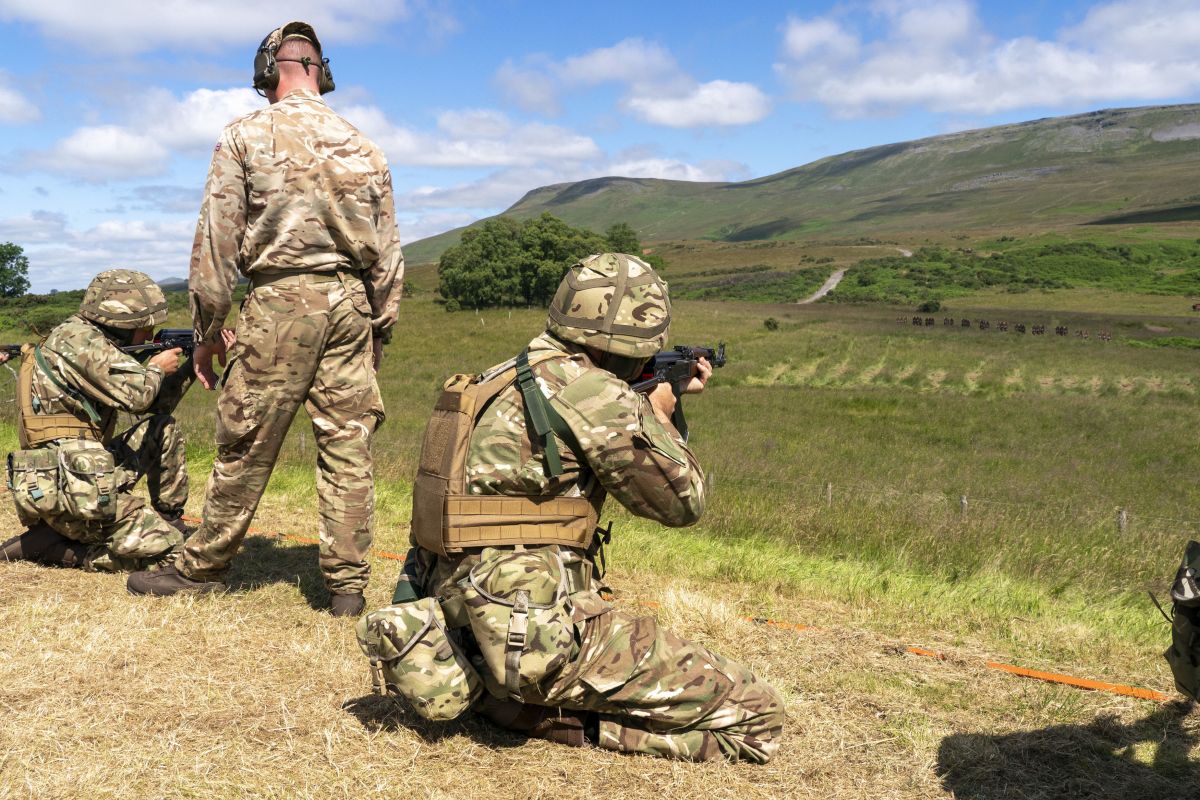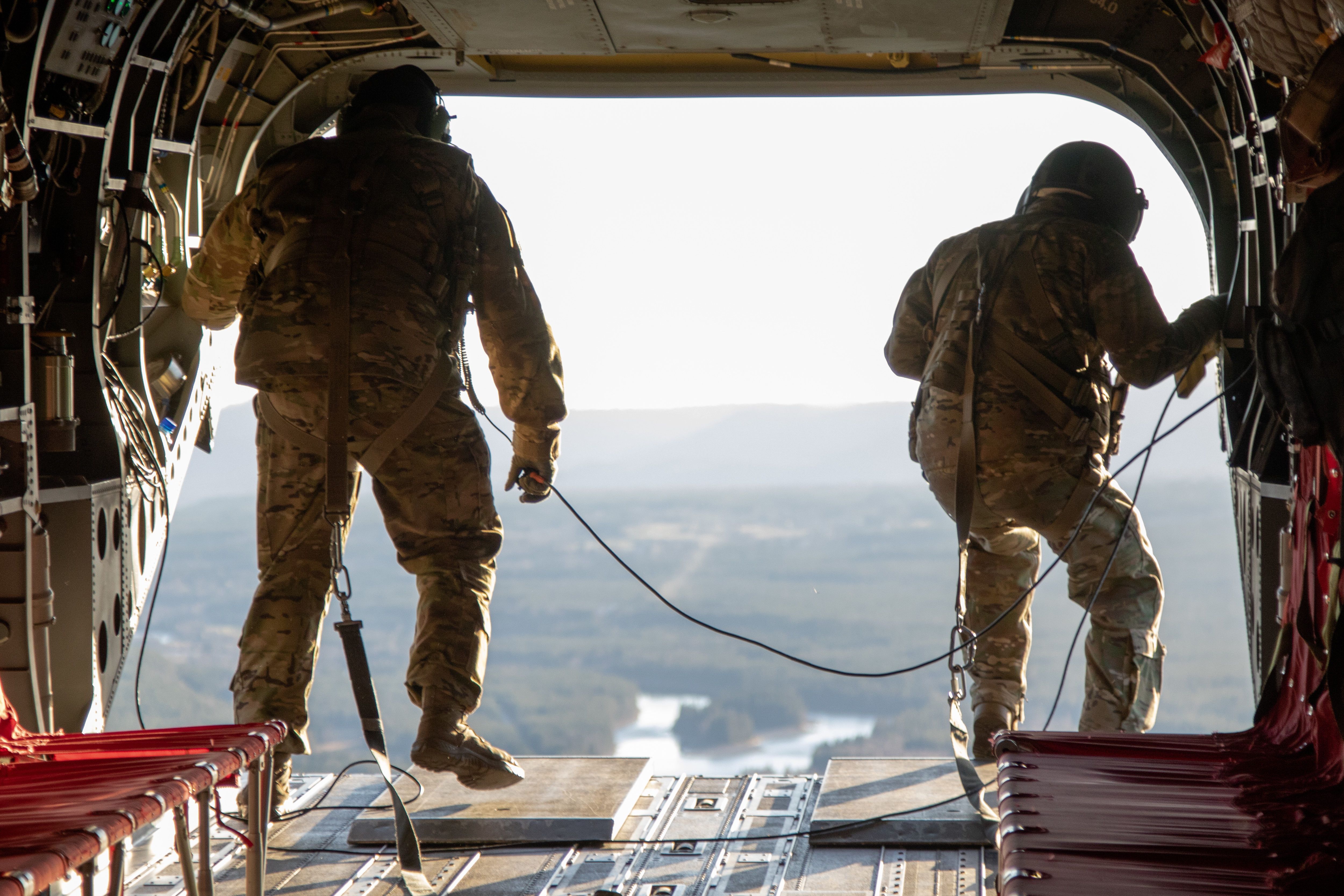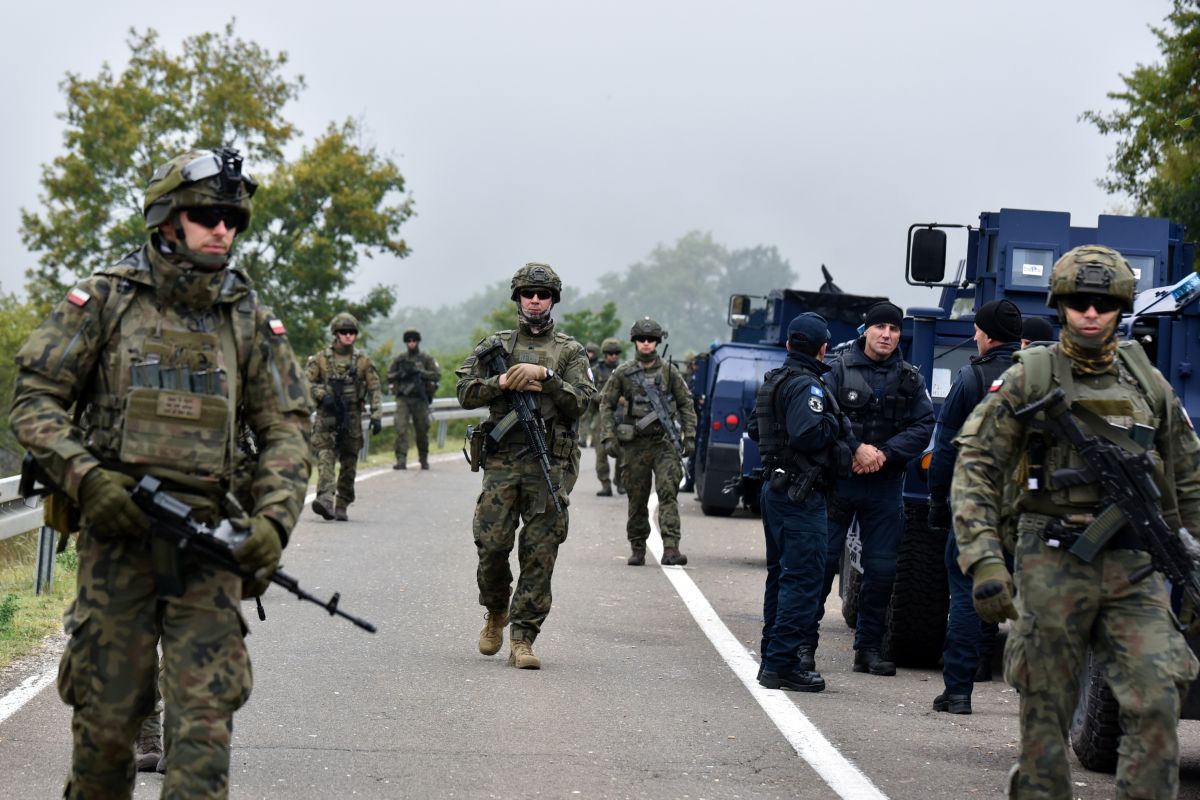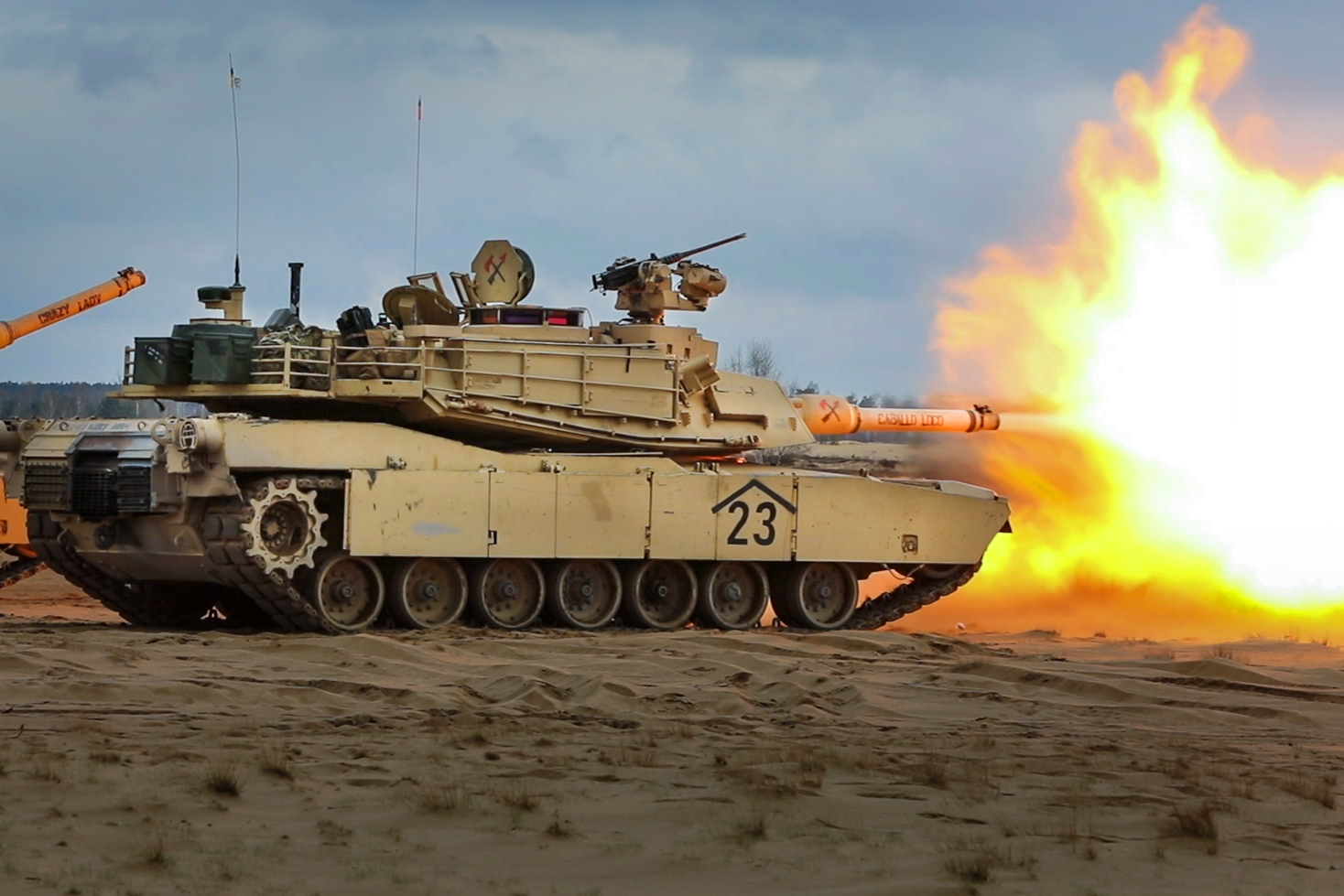New NATO Strategy Reshapes the Future of Crisis Response
According to the strategy adopted by NATO in Madrid, preventing and responding to security crises in the Alliance neighbourhood remains one of its tasks. However, the experience of nearly three decades of missions outside the treaty area, especially Afghanistan, has contributed to a change in NATO’s approach to one that intends to engage more in prevention rather than direct intervention. Capacity-building and enhancing the resilience of NATO partners, including civilian crisis management, will become increasingly important.
 Louis Wood/The Sun/ News Licensing/ FORUM
Louis Wood/The Sun/ News Licensing/ FORUM
NATO’s new strategy restores the Alliance priority of its core mission of collective defence. Crisis-response and cooperative-security tasks are to play a supporting role, strengthening transatlantic security and countering threats from all geographical directions (the 360-degree principle). Compared to the previous strategy from 2010. NATO is showing less ambition in the field of direct (military) response to crises outside the treaty area. The focus is now on conflict prevention and combating asymmetric threats in cooperation with regional partners. The catalogue of challenges in this area, primarily related to instability in the southern neighbourhood (e.g., terrorism, conflict, migration, failed states), has been expanded. Hybrid threats, protection of civilians, security of maritime routes and energy supplies, the issue of climate change, the food crisis, and the impact of pandemics, among others, have been added to it. To counter them more effectively, NATO announced that it will strengthen cooperation with the UN, the European Union, the African Union (AU), and partners.
Three Decades of NATO Crisis Response
Since the early 1990s, NATO has been developing capabilities to counter and respond to crises in its neighbourhood. The expansion of tasks to include so-called non-Article 5 missions (not related to collective defence) resulted from, among other things, a redefinition of NATO’s role after the Cold War, the low risk of military confrontation with the USSR/Russia, the destabilising impact of local conflicts (mainly in the Balkans), and asymmetric threats (especially terrorism) on transatlantic security. The “Rome Strategy” (1991) only hinted at the need to expand NATO’s catalogue of tasks to include anti-crisis activities. The “Washington Strategy” (1999), on the other hand, introduced the concept of “out of area missions”. The experience of the Balkan missions illustrated the serious weaknesses of European armies in the conduct of expeditionary missions—setting the general direction of their modernisation towards mobile forces capable of rapid transfer to the theatre of operations. They also prompted the Alliance to develop programmes of cooperation with partners in the joint conduct of peacekeeping operations, to develop civil-military cooperation and to coordinate with other international organisations.
To perform crisis-response tasks more effectively, between 1994 and 2004 NATO developed a network of partnerships and carried out reforms in the command structure (e.g., by establishing new commands in Brunssum, the Netherlands, and Naples, Italy). NATO Response Forces (NRF) were also established, providing both crisis response and collective defence capabilities. These changes resulted from, among other things, NATO’s role in the global campaign to combat international terrorism after the attacks of 11 September 2001. A counter-terrorism operation in the Mediterranean Sea (Active Endeavour) was then launched, replaced in November 2016 by Sea Guardian, which continues to this day. NATO has played a key role in the stabilisation of Afghanistan (ISAF mission, until 2014 and RSM, 2014-2022) and supporting the training of Iraqi security forces (NTM-I mission). In cooperation with the UN and AU, the Alliance also conducted anti-piracy and humanitarian operations in the Horn of Africa (Operations Allied Provider and Ocean Shield). In 2011. NATO participated in the intervention in Libya (United Protector), again proving the limitations of European armies (including France and the UK) in conducting expeditionary operations.
New Strategy: Prevention Instead of Intervention
The debate about the role of NATO’s crisis response in the new strategy has been dominated by the experience of the Afghan missions. Despite nearly 20 years of the Alliance’s military, political, and financial commitment to stabilising Afghanistan, the Taliban returned to power in Kabul in August 2021, defeating the Western-trained and armed Afghan army. The way in which the mission was terminated and international forces withdrawn triggered criticism and again called into question NATO’s ability to respond effectively to a crisis. The financial costs (e.g., for the U.S. was $2.3 trillion, for the UK, $30 billion, and for Germany, $19 billion) and human costs (more than 3,500 coalition troops died), and the meagre results of the Afghan missions, sealed a change in thinking about out-of-area operations. They confirmed assessments critical of the Iraq and Libya experiences and resulted in the Allies conspicuously avoiding declarations of participation in further interventions (e.g., fighting ISIS in Syria), focusing instead on cooperation with partners and regional organisations in the stabilisation of the NATO neighbourhood.
Over three decades, NATO has developed cooperation with 40 countries in Central and Eastern Europe, Central Asia, the Mediterranean, and the Persian Gulf, and with what it calls global partners (e.g., Australia, Japan, South Korea, Colombia, New Zealand). The cooperation programmes address counterterrorism, cybersecurity, protection of sea lines of communication, civilian crisis management, defence-sector reform, non-proliferation of weapons of mass destruction, and others. They contribute to building the capacity of partners and their interoperability with NATO forces, also in the framework of crisis-response missions. This cooperation enables, among other things, joint military exercises and political consultations, and the exchange of information that raises situational awareness and strengthens early warning capabilities concerning crises.
In Madrid, NATO did not announce the creation of new cooperation programmes. However, new challenges and threats (e.g., related to hybrid operations, healthcare, climate change) were identified in the strategy. This will contribute to broadening the scope of the Alliance’s cooperation with selected partners. NATO has also announced reform of the NRF model, which will not only strengthen deterrence and defence capabilities, but also its use for possible counter-crisis missions. So far, the NRF has been used in 2005 for humanitarian assistance after Hurricane Katrina in the U.S. and after the earthquake in Pakistan, among others. It was also used in 2021 to evacuate personnel from Afghanistan. Elements of the Very High Readiness Joint Task Force (VJTF), within the NRF, were in turn deployed to Romania in February this year in response to the Russian invasion of Ukraine.
Lessons for Poland
Poland’s participation in NATO operations in the Balkans, the Mediterranean Sea, the Middle East, and Afghanistan has proven that it is meeting its Allied commitments. However, this has necessitated the transformation and technical modernisation of the Polish armed forces towards capabilities useful in operations against a weaker adversary using asymmetric tactics. The national territory defence scenario requires different capabilities. At the NATO level, the focus on out-of-area operations was associated with a drastic decline in the importance of collective defence and a lack of, until 2014-2016, investment in the Alliance’s ability to deter and defend against Russia. Changing the approach to responding to crises in NATO’s neighbourhood from direct engagement to a greater preventive role in cooperation with regional partners is therefore beneficial for Poland. It will enhance its partners’ ability to provide security on their own and reduce the risk of engaging in costly direct military interventions. It is in Poland’s interest to expand the scope of its cooperation programmes with Ukraine, Georgia, and Moldova to include elements that enhance their defence capabilities in high-intensity conflict.
The change in NATO’s approach to crisis response will increase the importance of cooperation with the EU in this area. The announced creation of an EU Rapid Deployment Capability (EU RDC), NATO’s focus on deterrence and collective defence, may help to create a “division of labour” between them in Euro-Atlantic security. While reiterating its commitment to building common security in line with the 360-degree principle, Poland may consider greater involvement in EU missions and operations where there is a risk of destabilisation as a result of Russian hybrid actions (e.g., Bosnia and Herzegovina, Central African Republic, Sahel).





